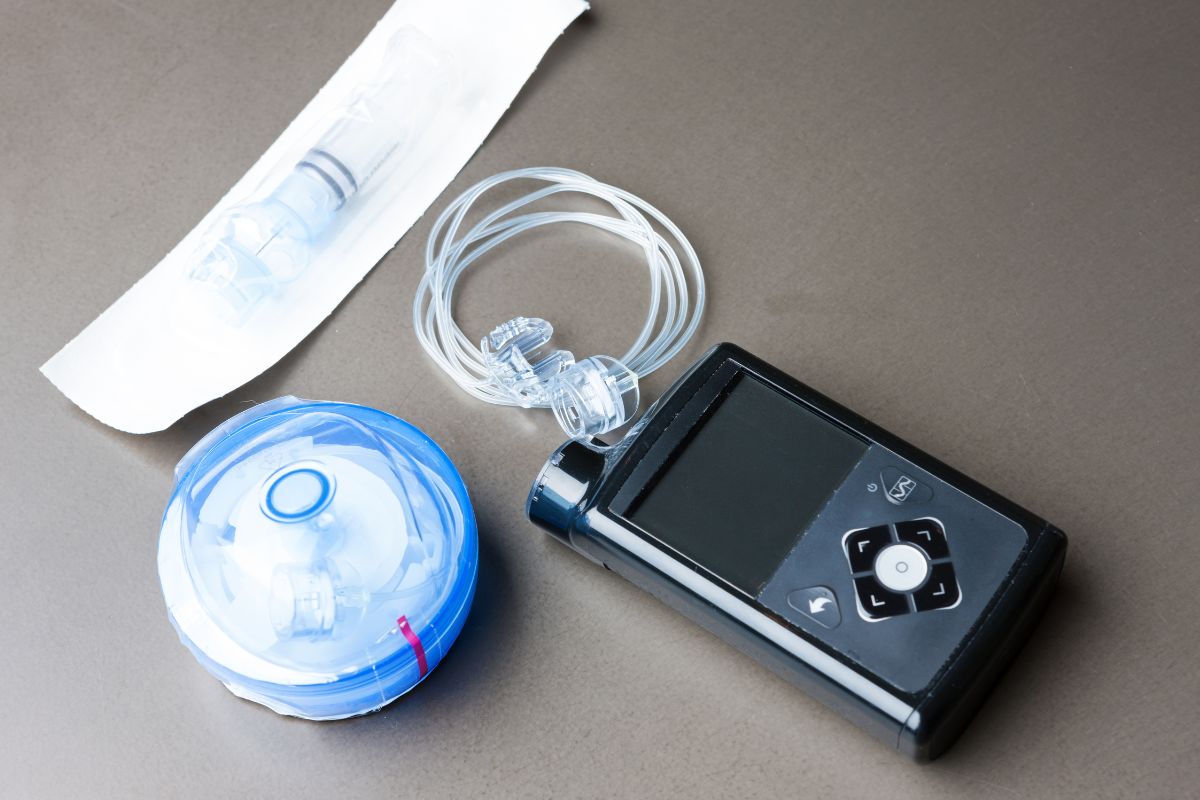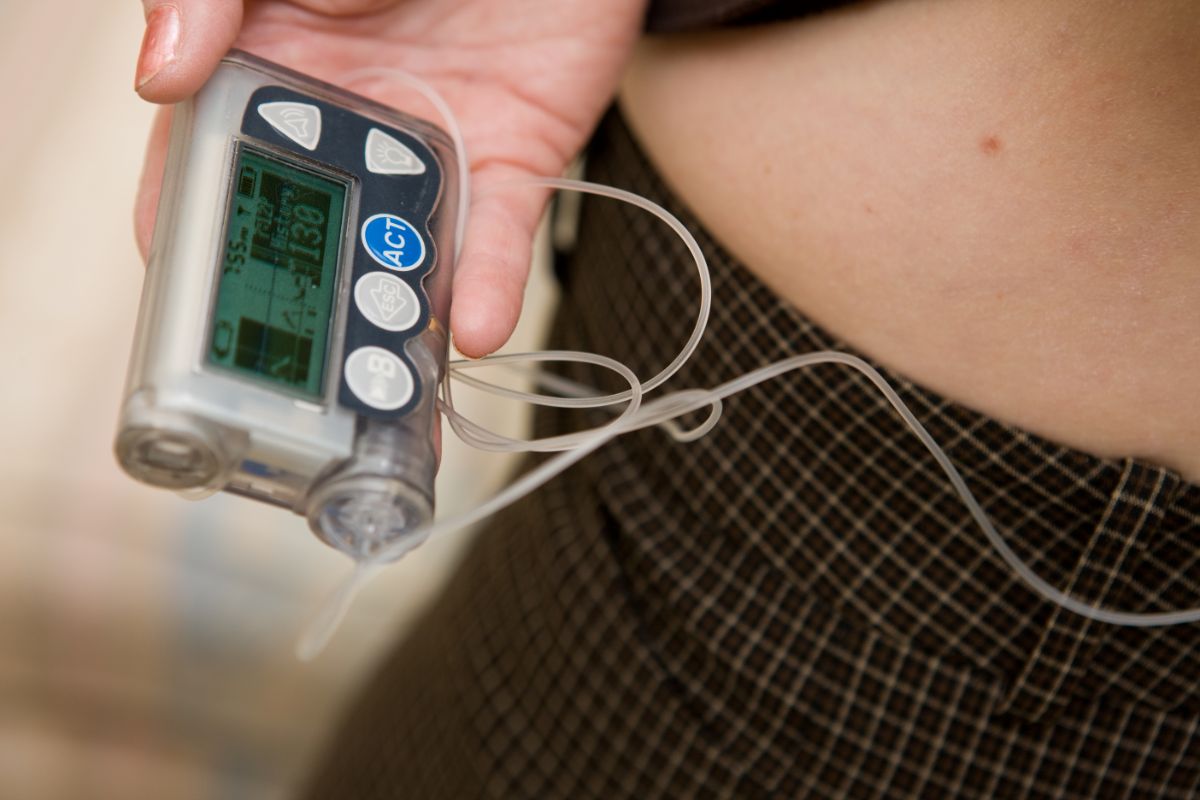Having an insulin pump can literally be a lifesaver. These pumps will reduce the risk of having a seizure and will really help if you are lax with keeping to your insulin schedule.

This takes the form of an electronic device that is connected to your body at all times and will pump insulin into your body throughout the day and the night at regular intervals.
These are strictly calculated and will not cause your sugar levels to spike.
But what if you are a regular swimmer and you want to wear your insulin pump in the water? Is this possible? Should you disconnect your insulin pump before going in the water?
How will this affect your insulin levels while you’re swimming? Well, if you want to know the answers to these questions and a lot more, then keep reading.
What Is An Insulin Pump?
This is a handy electronic device that will release insulin into your body during a strictly timed period. There are many different types of pump, each one adapted to your specific diabetes condition.
Usually a healthcare professional will help you set up the dosage on your insulin pump, again in keeping with your specific needs. This can be regulated into blocks of time that will serve to meet your basic needs of insulin.
If you have started exercising, then you might need your insulin pump altered to match the lowered levels of insulin. Again, you should consult your healthcare professional to help you with this.
A lot of these insulin pumps with have bolus calculators on them. These calculators will enable you to measure the amount of insulin going into your bloodstream through your food and top it up accordingly. This completely takes out the human element.
What Types Of Insulin Pumps Are There?
You can have two types of insulin pump: a tethered pump or a patch pump. Both of these types are attached by a cannula, which is a thin tube that is connected to your body.
It will become easier to attach a cannula, although you will have to regularly change the location that this tube is attached to, as this will lead to rashes and itching.
A tethered pump usually comes with a control screen that you can use to alter the settings of your insulin levels. You can also clip this one into your belt or trousers, hiding it away discreetly.
A patch pump is used in much the same manner as a tethered pump, however, with this type of pump, you can easily dispose of it.

Can You Wear An Insulin Pump While Swimming?
You can wear certain insulin pumps that have been designed to be waterproof. However, some of them come with certain adhesive tapes that can come loose when you submerge them in water for a long period of time.
There are also some types of insulin pumps that have a tube that you’ll have to make sure does not catch on anything. If you are swimming a difficult stroke, then you’ll definitely have to watch that it does not get snagged.
You might have to increase or decrease your insulin levels depending on how much activity you’ll be doing.
For example, if you are going to be swimming more, then you might have to lower your insulin as increased activity will lower the blood sugar as it is burned off into energy.
You might have to take some supplementary insulin or ingest a carbohydrate snack before you go out swimming.
What About Non-Waterproof Insulin Pumps?
You can take some of these in the water, although it will be much shorter periods of time. However, with most insulin pumps, you’ll need to disconnect them before entering the water.
When you do this, you’ll need to make sure that you monitor your ketone levels before and after you go swimming. If your ketone levels are high, then this will mean that you aren’t producing that much insulin.
If you are starting to feel fatigued or confused while you are swimming, then we would suggest that you stop and check your glucose levels. It might be a sign that your blood sugar levels are dropping.
If you have adhesive on your infusion set, then you might find this peeling off after increased exposure to water. This means that you will need to get more adhesives to replace the ones that have worn off.
When Should You Test Your Insulin Levels?
We would recommend that you test your insulin levels before you go out on the water and afterward. This will allow you to ascertain whether or not your blood sugar levels are affected by increased exercise.
Most of the time you will notice that your blood sugar levels might be lower after you have exercised. The simple reason for this will be because your body will be marshalling all of the glucose in your body and converting it to energy for your cells.
If you have diabetes then your body will have trouble producing insulin to allow for this transfer of glucose into energy. The result will be a lot of excess glucose in the blood and very little energy in the cells.
Will You Need Additional Insulin Shots With An Insulin Pump?
You might need a little top of insulin when you are doing some long-distance swimming. This is so you can be sure that the additional glucose will be converted into energy when you increase your activity levels.
You might also need some extra insulin after you have exercised so that you can be sure that you’ll keep up your energy levels and not feel that extra tiredness when you have finished your swimming session.
How Much Will You Have To Pay For An Insulin Pump?
Normally you’ll have to spend anywhere between $2000 and $4000 for a decent insulin pump. However, one of the great things about these devices is that they last anywhere between 4 and 8 years, which makes it a great investment.
Conclusion
We hope that our guide to swimming with an insulin pump has given you enough information to make an informed decision when taking your pump into the water.
- Understanding Male Reproductive Health: A Complete Guide - February 2, 2025
- Simple Healthy Skin Habits for Radiant Skin - December 6, 2024
- Unlocking the Connection Between Nutrition and Mental Health - December 3, 2024








